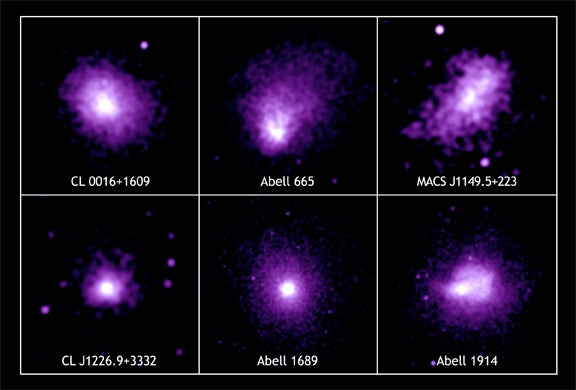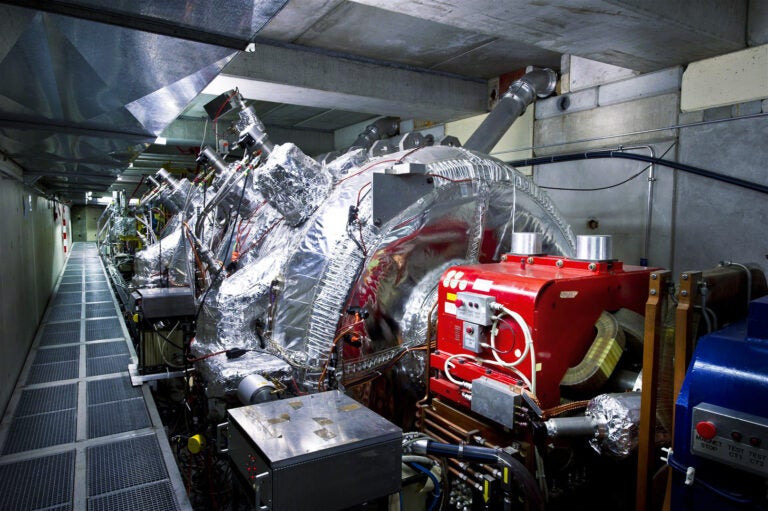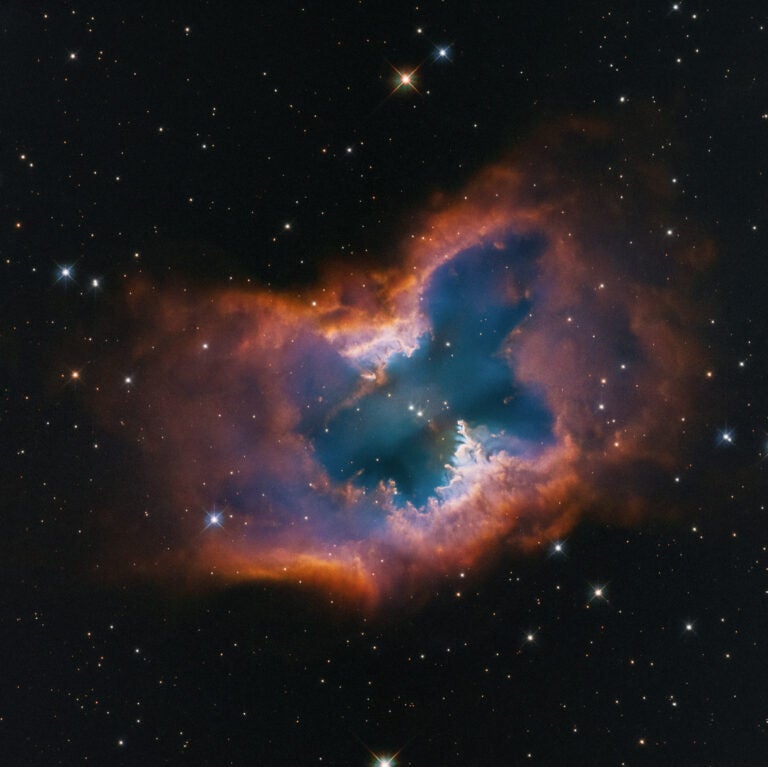We don’t know the rate exactly, but in the last 50 years, we’ve narrowed it down to either 67 or 73 km/s/Mpc. That’s not to say we believe the true expansion rate lies between those two values, but rather we think it’s reasonably close to either one or the other. So a galaxy 1 Mpc away — 3.26 million light-years — is moving away from us at 73 km/s (or 67 km/s, depending on which scientists you’re talking to). A galaxy 10 Mpc away would be moving at 730 (or 670) km/s.
Two pieces of information are needed to calculate the Hubble parameter: how far away an object is, and how fast it appears to be moving. The redshift of a galaxy — the amount its light has been stretched due to its motion away from us — gives the latter. Measuring the former has been notoriously harder because while an object’s brightness (or luminosity) grows dimmer with distance in a predictable way, an astronomer must already know luminosity to establish distance.
The key is to find a relationship between the luminosity of an object and some other observable parameter. For example, Cepheid variable stars pulsate periodically, and that period is related to their luminosity. Using independent methods of distance measurement, we can determine the distance to Cepheids locally. And because we know how bright they should be, we can use them as “standard candles” to calibrate our distance measurements when we see them in nearby galaxies. Moving outward, other studies have linked measurable galaxy properties to their luminosity, allowing astronomers to then calculate their distances.
Approaching from another side, scientists also study the cosmic microwave background (CMB), which hints at the appearance of the very young universe. Based on our current standard model, astronomers can compare observations of tiny temperature differences in the CMB with simulations using various values for the Hubble parameter to find the best match.
Ultimately, the difference between 67 and 73 km/s/Mpc could come down to different assumptions made along the way when arriving at a value. Alternatively, each method looks at different epochs in our cosmic history, and could be telling us that our infant universe followed a set of rules different from the ones we live by today. Calculations based on the CMB favor a value of 67 km/s/Mpc, while those based on Cepheids and galaxies favor 73 km/s/Mpc.
It’s possible that the Laser Interferometer Gravitational-wave Observatory (LIGO), having proven its ability to detect neutron star collisions, may give us a deciding vote. Or it may give us a third contender.
Valerie Mikles
National Oceanic and Atmospheric
Administration Contractor,
Quality Assurance, I.M. Systems Group,
College Park, Maryland










